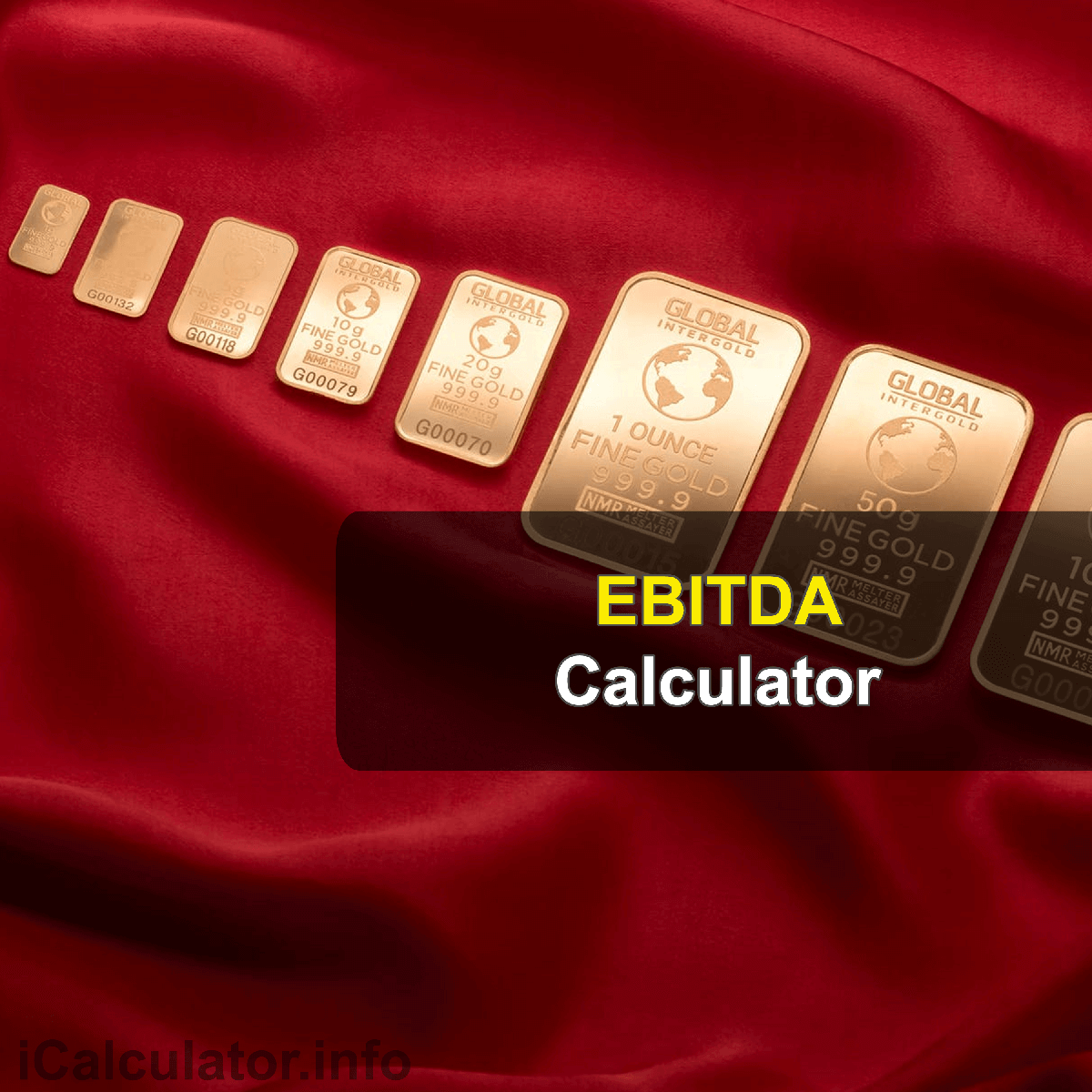Menu
EBITDA Calculator
Calculate your Earnings Before Interest, Taxes, Depreciation and Amortization (EBITDA) using the simple EBITDA Calculator, you can also find information in our guide to EBITDA below the calculator.
| Revenue: | |
| Expenses: | |
| EBIT: | |
| Amortization: | |
| Depreciation: |
Please provide a rating, it takes seconds and helps us to keep this resource free for all to use
EBITDA: A measure to compare your company's profitability

Earnings Before Interest, Tax, Depreciation and Amortization, also known as EBITDA is a metric system to measure a company's profitability. This is generally used to compare a company's profitability over time or with other companies with different capital structures.
In other words, EBITDA is a measure of a company's financial performance without considering the company's tax environment, financial and accounting decisions. It is calculated by adding back non-cash expenses of amortization and depreciation to a firm's operating income.
Breaking down EBITDA
EBITDA stands for Earnings before interest, tax, depreciation and amortization. This means the method gives you a figure of your firm's profit before:
- Interest - To make comparisons over time or with different companies this factor needs to be eliminated. Interest is paid on debt and not all companies have debts at all times.
- Tax - There are different tax regimes in every country. Moreover, different taxes are levied to different industries. So, in order to do the comparisons this metric excludes tax payments.
- Depreciation - Depreciation is a theoretical value that changes with every industry, time frame and decision of the directors. This makes it highly variable and manipulable, so the expense is ignored by this metric.
- Amortization - This is the cost of intangible assets such as copyright, spread over time. This cannot be included in the metric as this as well is different for all the industries.
Using the EBITDA Calculator
The EBITDA calculator by iCalculator is designed to help you with these complex calculations. You will have to enter the below details for the calculation:
- Revenue - Your total revenue for a particular period, generally a year.
- Expenses - The total expenses incurred in your company in that period to be entered.
- EBIT - Earnings before any interest payments and tax payments needs to be entered.
- Amortization - Any costs incurred on a regular basis on your immaterial assets in your company.
- Depreciation - The depreciation expense of your firm over that particular period of time.
On the basis of your inputs the calculator will provide you with below results.
- EBITDA - This figure will show you the profit that your firm is making before interest, tax, depreciation and amortization.
- EBITDA Margin - This is the percentage of EBITDA and a snapshot of your operational efficiency
Why use the EBITDA calculator?
The EBITDA calculator is a simple tool for complex calculations. You may benefit in different ways:
- The calculator is a free online tool, which saves your time and effort.
- The calculator helps you complete easy comparisons of your own or with other businesses.
- Very useful for new as well as existing companies in the market.
- It is helpful in making informed, future financial decisions of a company.
Why EBITDA is important regardless of criticism
There are a lot of disagreements about the usefulness of EBITDA. However, it is a widely used metric for the following reasons:
This method allows investors to focus on operating profitability due to the exclusion of interest, tax, depreciation and amortization. Due to this merit EBITDA is useful in comparing similar as well as different companies operating in different tax brackets.
The EBITDA method gives you a quick analysis of any firm's operating efficiency. This shows a company's baseline profitability thus making it a quite reliable method for new investors.
EBITDA is also used by investors considering a take over an existing business. Also, the businesses turn to EBITDA when they are making less profits as the metric provides a clear picture of profitability.
Limitations and drawbacks of EBITDA
EBITDA is not regulated by GAAP. Investors are at the discretion of the company of what is and is not included in the calculation. This metric sometimes gets a bad reputation due to overexposure and improper use.
There are a few drawbacks to this method, majorly because it ignores:
- Working capital - EBITDA ignores the cost of capital that is required for running any business as well as replacing old equipment.
- Cost of assets - EBITDA assumes the profitability is a result of only sales and operations in a business. Ignoring cost of assets is a major drawback as it makes the calculations unrealistic.
- Starting points - Ignoring the fact that all businesses use different earning figures as a starting point of EBITDA makes the entire calculation unreliable.
- Company valuation - It represents a company as if it has never paid any interest or taxes and its assets have never lost their value, be it tangible or intangible.
To summarize the whole concept, EBITDA is a very useful tool to compare the profitability of a company but at the same time it should not be used as a standalone measure for this.
Finance Calculators
You may also find the following Finance calculators useful.
- Payments Calculator
- Simple Profit Calculator
- Percentage Depreciation Calculator
- Earnings Before Interest Taxes Depreciation And Amortization Calculator
- Roi Calculator
- Enterprise Value Calculator
- Earnings Per Share Calculator
- Buy To Let Mortgage Calculator
- Book Value Per Common Share Calculator
- Annual Percentage Yield Calculator
- Savings Calculator
- Mortgage Discount Points Calculator
- Insolvency Calculator
- Debt Payoff Calculator
- Creditor Days Calculation
- Effective Cpm Calculator
- Auto Loan Emi Calculator
- Annual Loan Repayment Calculator
- Currency Converter
- Layaway Plan Calculator